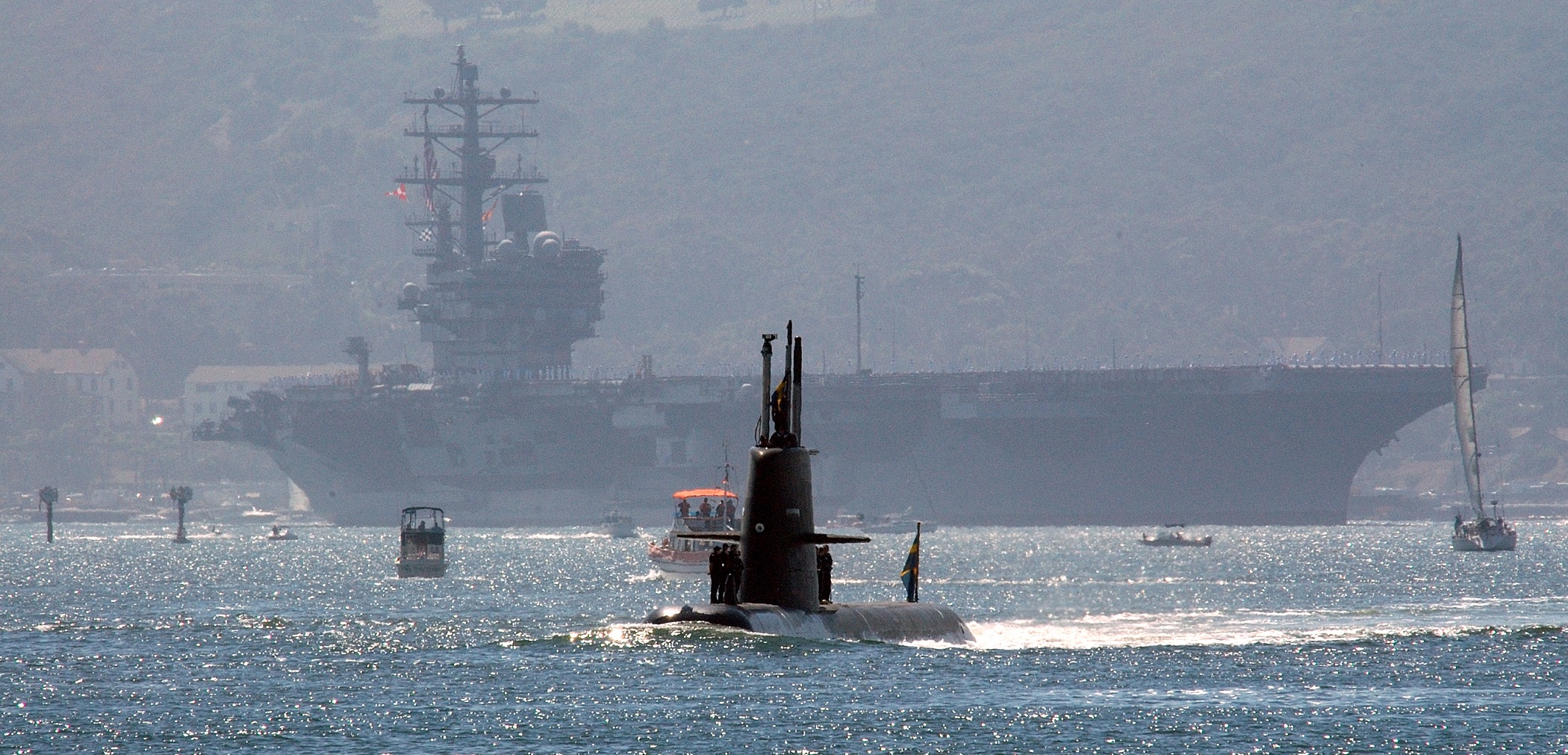$4.5 Billion Navy Aircraft Carrier 'Sinks' in Wargame Thanks to $100 Million Submarine
In 2005, a Gotland-class submarine famously "sank" the USS Ronald Reagan during a wargame, showcasing its stealth and effectiveness. With features like a hydrodynamic hull, noise-reducing technologies, and radar-absorbent materials, these submarines are exceptionally difficult to detect.
What You Need to Know: For years, Sweden's Gotland-class diesel-electric submarines have stood as some of the most advanced vessels in the nation's navy. Pioneering the use of the Stirling engine air-independent propulsion (AIP) system, they can remain submerged for extended periods, a capability once exclusive to nuclear submarines.

-In 2005, a Gotland-class submarine famously "sank" the USS Ronald Reagan during a wargame, showcasing its stealth and effectiveness. With features like a hydrodynamic hull, noise-reducing technologies, and radar-absorbent materials, these submarines are exceptionally difficult to detect.
-Recent upgrades have enhanced their combat systems and sensors, ensuring they remain a formidable asset as Sweden continues to bolster its naval capabilities.
What Makes the Gotland-Class Submarines So Special
For years now, Sweden’s Gotland-class diesel-electric submarines have remained one of the most advanced vessels in the country’s navy.
Designed primarily for anti-submarine and anti-ship warfare, the formidable ship actually became the first submarine ever to feature a Stirling engine air-independent propulsion (AIP) system.
Prior to the introduction of the Gotland-class ships, only nuclear-powered submarines had been able to extend their underwater endurance from a couple days to weeks.
She 'Sank' a U.S. Navy Aircraft Carrier in a Simulation
Perhaps what makes the submarine famous was back in 2005, the Gotland was able to snap pictures of the USS Ronald Reagan in a wargame.
Many naval experts confirm this as a theoretical kill, considering how close she was able to get to the U.S. Navy aircraft carrier.
The crazy thing about this situation is that the Gotland-class boat only cost about $100 million to build where, whereas the Navy's aircraft carrier tips the financial scales at $4.5 billion. Talk about bang for the buck when it comes to Sweden's submarines.
What makes the Gotland-class ships stand out?
Like Sweden’s other two submarines, the Uppland and the Halland, the Gotland is now more than a quarter-century old.
Despite this age, however, these ships continue to lead Sweden’s navy. Back in the early 1990s, the Gotland-class vessels were ordered.
Within a couple of years, construction was initiated at the Kockums shipyard (which was later acquired by the manufacturer Saab). By 1996, the first Gotland was commissioned and was followed closely by Uppland and Halland.

Two sets of MTU engines power the Gotland-class submarines. The Stirling engine AIP system installed on the ships can be used to drive a generator for both the propulsion or charging the batteries.
These engines can burn either standard diesel fuel or oxygen stored in liquid oxygen tanks. This AIP is notably very silent, a huge asset for submarines designed to remain undetected by enemy ships.
In addition to the AIP, the submarines also have two standard diesel engines that are used for longer-distance stints.
These submarines measure around 60 meters long and can travel up to 20 knots when submerged. An X-rudder system has also been incorporated into the ships to enhance maneuverability.
Additional specs and capabilities
Other than the sophisticated AIP system, the Gotland-class submarines sport many other features that contribute to its formidability. The submarines’ hydrodynamic hull minimizes noise and active sonar response, making it more difficult for enemy ships to locate.
Additionally, all machinery onboard is isolated and mounted on rubber to reduce noises and other vibrations. The ships’ masts are also coated with radar-absorbent materials.
The Gotland-Class underwent a massive rehaul
In 2018, the Gotland underwent an extensive enhancement program that incorporated a six-and-a-half foot section to the hull.
Other improvements were made to the submarine’s combat and data-management systems, the sensor suite, and the mast. Following these enhancements, the Gotland vessels can do displace 1,580 tons surfaced.
In terms of armaments, these ships can pack a punch, including two tubes for lighter-weight Type 45 or Type 47 torpedoes, four 21-inch bow tubes for heavyweight Type-62 torpedoes and a total of 12 heavyweight and 6 lightweight torpedoes that can be carried.
As the veteran Pentagon official Jim Townsend recently pointed out, “The Swedish Navy has always been seen as very competent, but it has also been very small because as a non-aligned country, Sweden didn’t need a blue-water navy [one capable of operating across open oceans].” Once it joins the alliance and tensions continue to mount across the region, perhaps additional resources will be allocated to building up Sweden’s naval capabilities. Until then, the Gotland-class submarines should be able to hold their own.
About the Author
Maya Carlin is an analyst with the Center for Security Policy and a former Anna Sobol Levy Fellow at IDC Herzliya in Israel. She has by-lines in many publications, including The National Interest, Jerusalem Post, and Times of Israel. You can follow her on Twitter: @MayaCarlin.
All images are Creative Commons.


